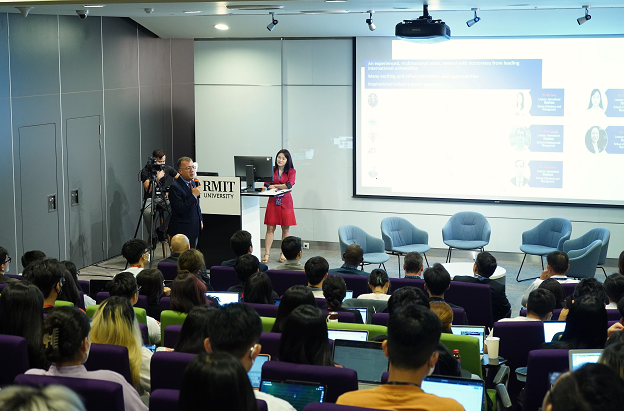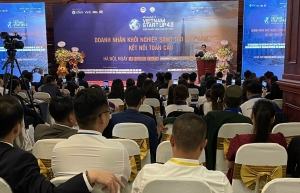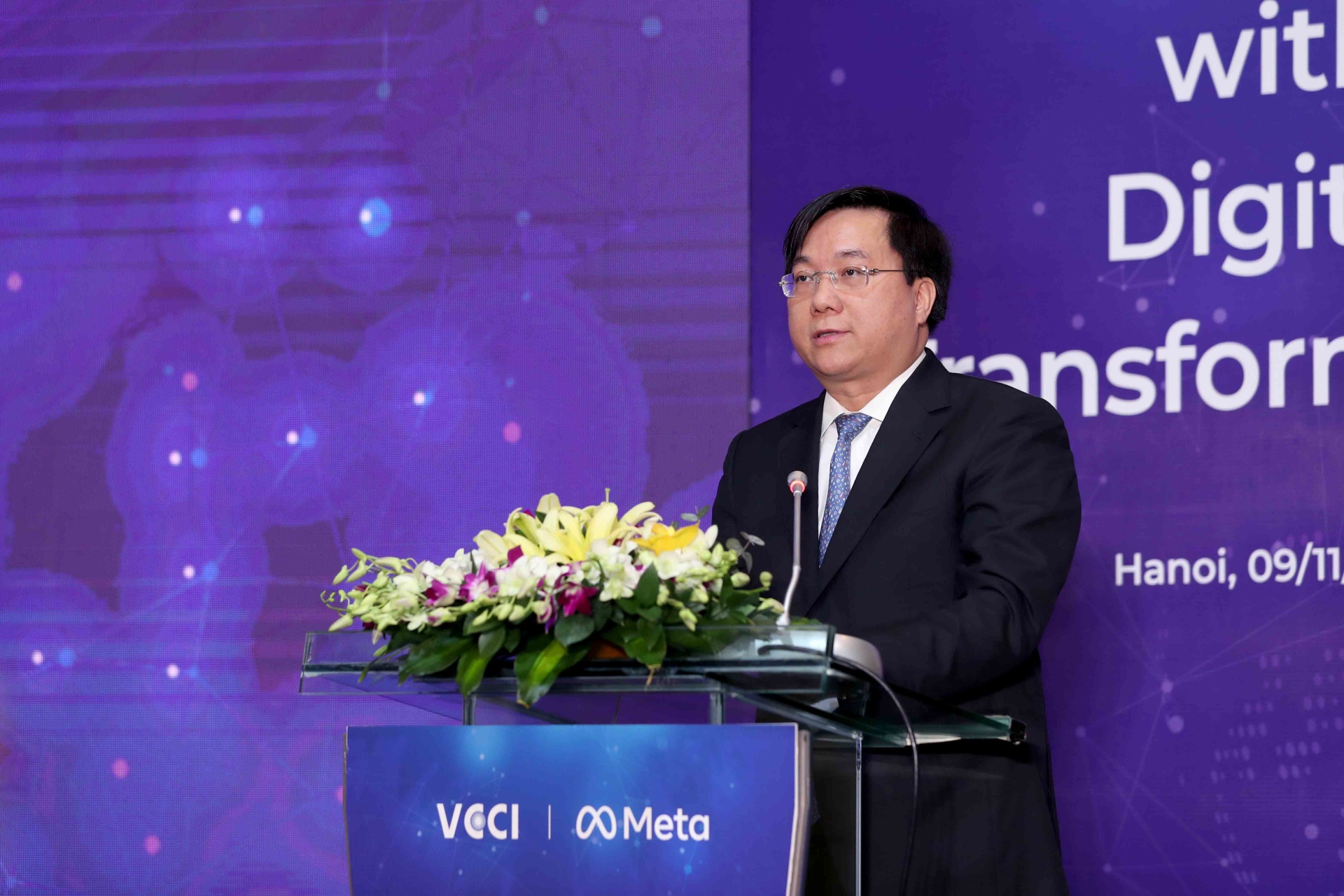Growth with Industry 4.0: What are the sufficient conditions?
Industry 4.0 is commonly looked at from the perspective of the digital world, digitalisation, and digital transformation. In today's world, each business features a different degree of digitalisation activities.
 |
How are enterprises preparing their organisations? How are insiders reacting? And what strategies should the leadership team implement for a successful transformation?
To answer these questions, global business experts from RMIT University Vietnam conducted a research project on Industry 4.0 with 112 Vietnamese CEOs, directors, and multi-level managers of large, medium, and small-sized enterprises in nine key industries.
Some of the key findings were shared at the RMIT International Business Forum on December 14.
Lead researcher Vu Thi Kim Oanh remarked, “The findings confirm that enterprises are well aware of the opportunities that digital transformation creates. It is considered a necessary condition for their growth.”
“However, how to drive this transformation – which could determine the pace of growth and success or failure of the business – involves several vital sufficient conditions.”
 |
| The RMIT International Business Forum on December 14 |
Oanh explained that the first sufficient condition is the preparation of the enterprise, which requires a knowledge-based collection of resources on digital transformation.
These resources include appropriate technological tools, capable human resources, and the capacity to package core action plans. Here, 82.5 per cent of managers want to prioritise training, followed by communication, policy development, and recruitment.
In addition to support from external factors such as government policies, lessons learned from exemplars, and the output of related industries (including training and technology), 86.2 per cent of managers value internal support to gradually adapt to the transformation.
“Specifically, enterprises need initiative from their staff, for instance, through their willingness to learn, efforts to overcome changes when implementing technology, and courage to face any failure,” Oanh noted.
According to fellow researcher Abel Duerte Alonso, the second sufficient condition is the timely identification of the system's response, particularly that of the staff.
Their study shows three main groups of employee reactions: Positive adaptation (45.5 per cent), non-readiness (38.2 per cent), and negative adaptation (16.3 per cent).
Most active employees belong to Gen Z – born between 1997-2012. They are proactive, quick to adopt technology, and love to explore, especially when experiencing the outstanding results that technology brings.
“However, many employees express scepticism or lack confidence in a new tech environment, which makes them hesitate to actively coordinate with the organisation. In addition to a lack of technical knowledge and a fear of making mistakes, they are afraid to deal with the new workload that arises in the early stages of a transformation,” said Alonso.
He continued, “Many complain about the complex features of a new application and some are even concerned that they may lose their jobs due to the new technology. At the most negative level, employees procrastinate with technology uptake or even decide to leave the organisation.”
 |
| (From left to right) RMIT University academics Abel Duarte Alonso, Vu Thi Kim Oanh, and Erhan Atay |
Creating appropriate strategies to manage the digital transformation process is the third sufficient condition, Oanh suggested.
To deal with the challenges of unreadiness and the adverse reactions mentioned above, 66.2 per cent of business leaders noted that they need to be more visible than ever to fulfil their leadership role.
“Leadership entails building trust among employees, leading, inspiring, and supporting them throughout the entire transformation process. This can be done through orientation activities, timely internal communication, training to help raise awareness, and qualifications for employees, to name but a few,” Oanh said.
| Customers' cooperation in experiencing the new technology and risk prevention solutions are other necessary strategies contributing to the success of the digital transformation process. |
Moreover, 41.2 per cent expressed that as business leaders they must show fierce determination in implementing the proposed action plan.
Alonso added, “They know that they have to display a strong commitment that the application of technology must be carried out daily and its benefits are undeniable. They are willing to experiment and also accept failure, even if they have to let some employees go or find new replacements to aid the long-term performance of the business.”
Meanwhile, 40 per cent observed that listening to employee feedback is important. This can help businesses make quality investment decisions and build practical, close-to-the-operation, and tailored technological tools to support the end-users.
Finally, customers' cooperation in experiencing the new technology and risk prevention solutions are other necessary strategies contributing to the success of the digital transformation process.
According to Statista (2022), investment capital in tech startups in Vietnam in 2021 reached a record high – surpassing $1.4 billion – which was a sharp increase compared to the previous year at $451 million. In addition, import-export value continues to make up a very large percentage of Vietnam’s GDP this year.
RMIT’s senior programme manager for Global Business Erhan Atay believes this demonstrates the impressive transformation of the Vietnamese market in the digital economy and the new context of globalisation.
It also signals that local businesses are getting ready to take on the global stage in the new environment.
“Such a dynamic and digitally connected world is exactly what we are preparing our Global Business students for at RMIT. Doing business is becoming increasingly borderless in the Industry 4.0 world.
“So it’s important that future business leaders understand the connections in various activities within and between organisations, countries, and industry sectors, and how Industry 4.0 and digitalisation are shaping that whole ecosystem,” Atay said.
 | Vietnam startup 4.0 – connecting for new opportunities The Vietnam Startup 4.0 Forum was held on October 19, bringing an opportunity to increase connectivity and cooperation in the future. |
 | Acceleration of 4.0 tech to help prepare new job creation Vietnam is embarking on its next development stage as a lower middle-income country pursuing innovation to achieve further sustainable development – thus, raising labour productivity in enterprises is considered a key to create a new growth model. |
 | Digital transformation accompanying SMEs for viability and growth The Ministry of Planning and Investment (MPI), the Vietnam Chamber of Commerce and Industry (VCCI), and Meta just organised the Forum on Accompanying SMEs with Digital Transformation. |
 | Sufficient legislation to attract top-quality foreign investment Inbound investment is the backbone of Vietnam’s economic growth, with export growth from foreign-invested enterprises as one measure of success continuing to grow significantly each year. Foreign-invested service sectors are also growing, with a broad range of advanced sectors now seeing Vietnam as a hub for the future, especially in the technology space. |
What the stars mean:
★ Poor ★ ★ Promising ★★★ Good ★★★★ Very good ★★★★★ Exceptional
 Tag:
Tag:
Related Contents
Latest News
More News
- Vietnam’s GDP forecast to grow by 9 per cent in 2026 (December 29, 2025 | 08:29)
- Women entrepreneurs are key to Vietnam’s economic growth (December 29, 2025 | 08:00)
- Vietnam's top 500 value-creating enterprises announced (December 27, 2025 | 08:00)
- The PAN Group shaping a better future with ESG strategy (December 26, 2025 | 09:00)
- Masan Consumer officially lists on HSX, marking the next phase of value creation (December 25, 2025 | 13:20)
- MCH to become the largest consumer stock on VN-Index (December 24, 2025 | 11:05)
- Oil and gas firms post strong 2025 results (December 22, 2025 | 17:42)
- SABECO wins multiple international beer awards (December 22, 2025 | 17:41)
- UOB sees Vietnam growth easing in fourth quarter (December 22, 2025 | 17:39)
- First members of Danang International Finance Centre revealed (December 22, 2025 | 17:39)




























 Mobile Version
Mobile Version